Dutch Lap vs Clapboard Siding: Choosing Home’s Exterior Style
To protect your house exteriors from the elements and pest infestation, you might want to consider installing siding, which can be divided into three main types – horizontal, vertical, and shingle. Among the three listed, ... Read more The post Dutch Lap vs Clapboard Siding: Choosing Home’s Exterior Style appeared first on Arthitectural.
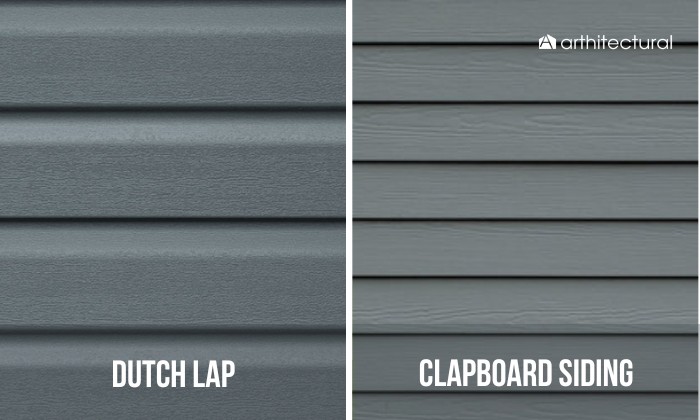

To protect your house exteriors from the elements and pest infestation, you might want to consider installing siding, which can be divided into three main types – horizontal, vertical, and shingle.
Among the three listed, horizontal designs are the most common option. While there are many variations of horizontal sidings, most prefer Dutch laps or traditional clapboard sidings.
Between Dutch lap vs clapboard siding, which one should you choose? You can make the decision based on their key difference – whereas the latter is flat, the former features a concave edge that casts a shadow.
Overview
1. Dutch Lap
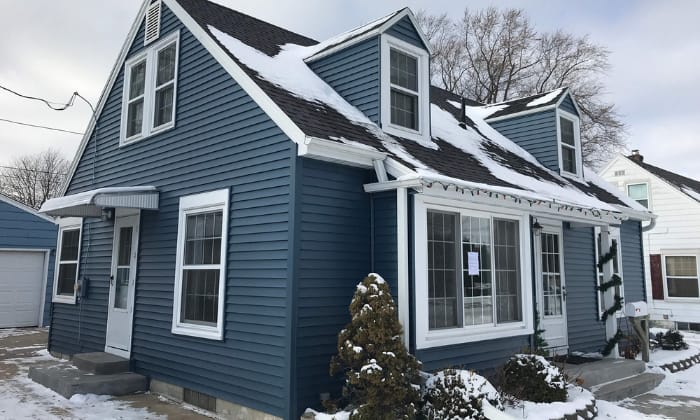
Widely popular in North America, Dutch lap siding is a traditional design style that features horizontal 0.04-to-0.75-inch-thick planks with bevels. Given how much the two resemble each other, Dutch laps are sometimes considered a variant of clapboard styles.
2. Clapboard Siding
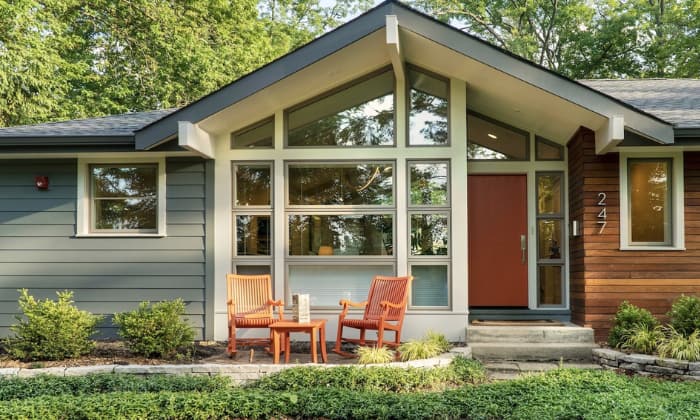
Also known as lap siding and weatherboard, clapboard siding features horizontal planks. However, instead of a concave edge, these planks get marginally bigger at the bottom (3/16″ on top and 15/32″ down below) and overlap one another.
Differences Between Dutch Lap and Clapboard Siding
1. Appearance
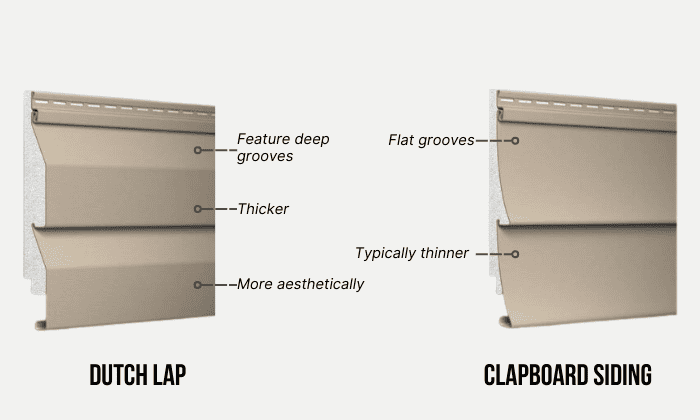
Appearance-wise, it may be hard to tell straight away which is which at just a glance. So, how do you distinguish clapboard vs Dutch lap? Here are a few tips:
- As mentioned above, clapboard sidings are flat, whereas Dutch lap panels feature deep grooves that give the impression that they’re separate planks.
- When not installed, it’s evidently clear that Dutch laps are bigger than clapboards. Whereas the former can have a width of 6 to 11 inches, the latter is only5 to 6.5 inches wide.
However, note that since the Dutch lap’s concave edge is usually in the middle of its panel, it’ll look like two planks with a breadth of 4 to 5.5 inches.
- While not always the case, Dutch laps are typically thicker than clapboards.
- The bevels in Dutch laps cast a distinct shadow line, which varies according to the sun’s posit Therefore, most people can agree that they’re more aesthetically pleasing than their clapboard counterparts.
2. Architectural Styles and Colors
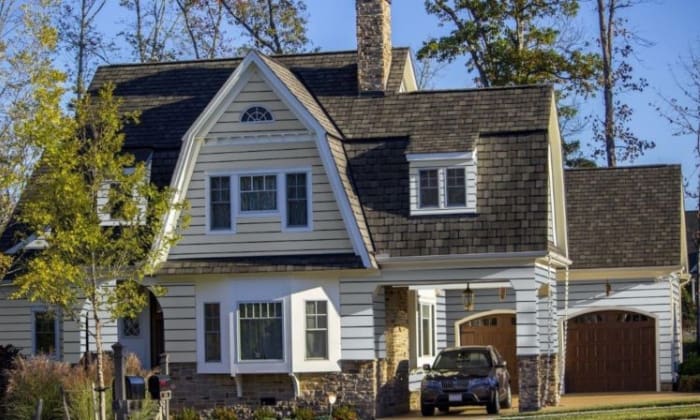
Despite their somewhat similar look, Dutch lap and clapboard sidings complement different architectural styles:
- Due to the visual complexity of its grooves’ shadows, the Dutch lap can add depth and dimensions to both modern and traditional styles with its classy and elegant appearance.
That said, this siding type best complements light-colored houses and prominent architectural styles of the 1880s, no matter how complex or simple. A few notable examples are Victorian, Gramble, and Greek Revival.
Since their bevels are what make Dutch laps stand out, you don’t want to pick darker shades that can hide the shadows. The deepest hues you can select for this siding style are midtones.
- Likewise, clapboard sidings can go well with almost any design scheme, although they best match traditional styles, such as Farmhouse and New England ones.
One advantage clapboard sidings have over Dutch laps is that the former can go with almost any color, as long as the pigment complements your home style. Feel free to pick a deep shade for a modern-looking house or light cream for your New England Colonial style.
3. Material
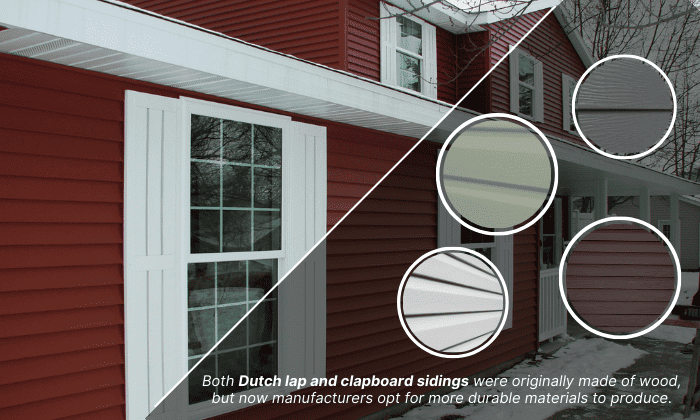
There’s not much of a difference between Dutch laps and clapboard sidings when it comes to material, as both were initially made of wood.
However, aside from being not very sustainable, wood is high-maintenance and prone to a myriad of problems, such as pest infestation, wind cracks, dry/wet rot, stains, and warping.
Therefore, manufacturers have now moved on to more durable options to make Dutch laps and clapboards, such as vinyl, fiber cement, steel, and aluminum, with the first and second options being the most popular.
Although traditional vinyl siding is widely favored due to its low maintenance and affordability, keep in mind that it’s also susceptible to warping and offers little protection. So, whether installing Dutch or clapboard siding, fiber cement is preferable.
4. Cost
In most cases, Dutch laps are more expensive than clapboard sidings made of the same material. Look at the table below to see their price disparity:
|
Clapboard (per square foot) |
Dutch lap (per square foot) | |
| Vinyl | $3 – $5 | $4 – $6 |
| Wood | $2 – $9 | $8 – $12 |
| Fiber cement | $2 – $5.25 | $5 – $11.5 |
As shown in the table above, the price difference between the two is usually negligible. The factor that has the most impact on project prices is actually the siding material.
5. Durability
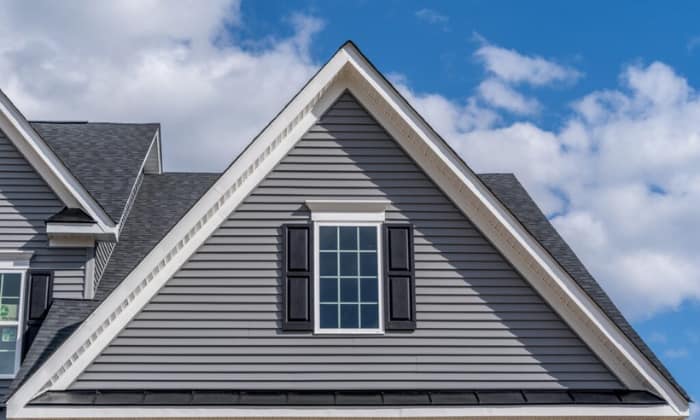
As you can likely guess from the section above, material can have a say in how durable a siding is. Then, can we say the same about the design style?
To be honest, although one can argue that Dutch laps are more weather-resistant and durable, what truly determines how long a siding will last is the material, not its design style.
In other words, if there’s no difference in terms of material, Dutch lap and clapboard sidings should have relatively similar lifespans, although the former may have a slight edge over the latter.
6. Ease of Installation
Even if you’re not particularly crafty, you’ll find that both are pretty easy to install yourself, although Dutch laps may be marginally more challenging, since you need to make sure the grooves are uniform and even.
Conclusion
To sum things up, the clearest difference between Dutch lap vs clapboard siding is their design – whereas the former features indented grooves, the latter doesn’t. Either way, they can both protect your home and improve its curb appeal.
Ultimately, there is no definite answer as to which one is better – it’s all about your budget, home style, and preference, really. But if I’m to voice my own opinion, I’d say I’m partial to Dutch laps due to the visual complexity and depth they offer.
The post Dutch Lap vs Clapboard Siding: Choosing Home’s Exterior Style appeared first on Arthitectural.
